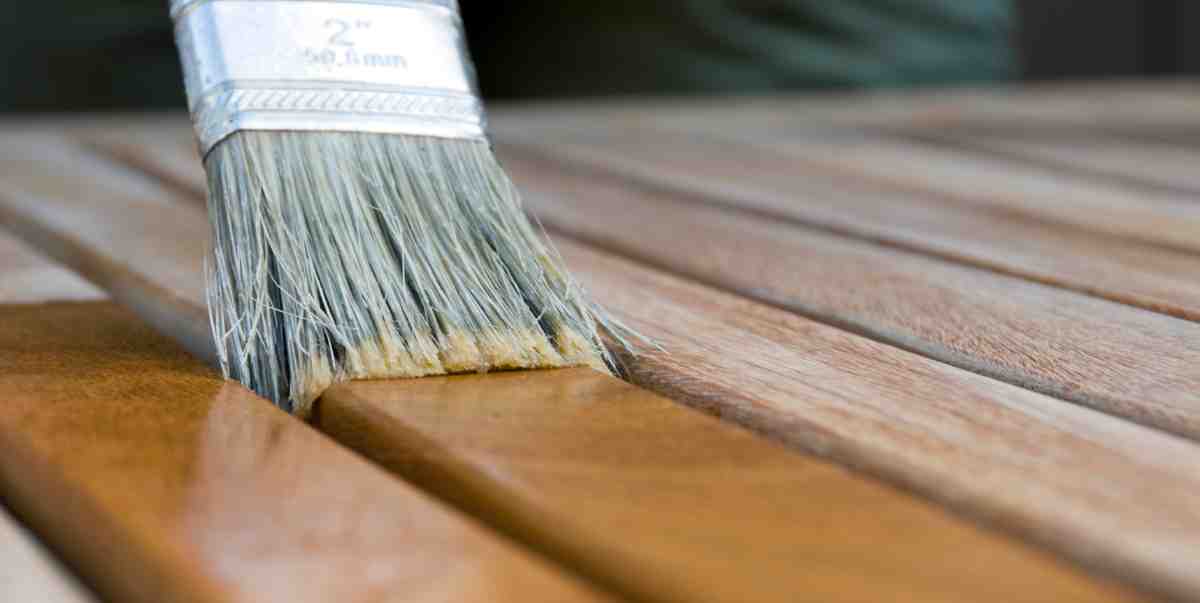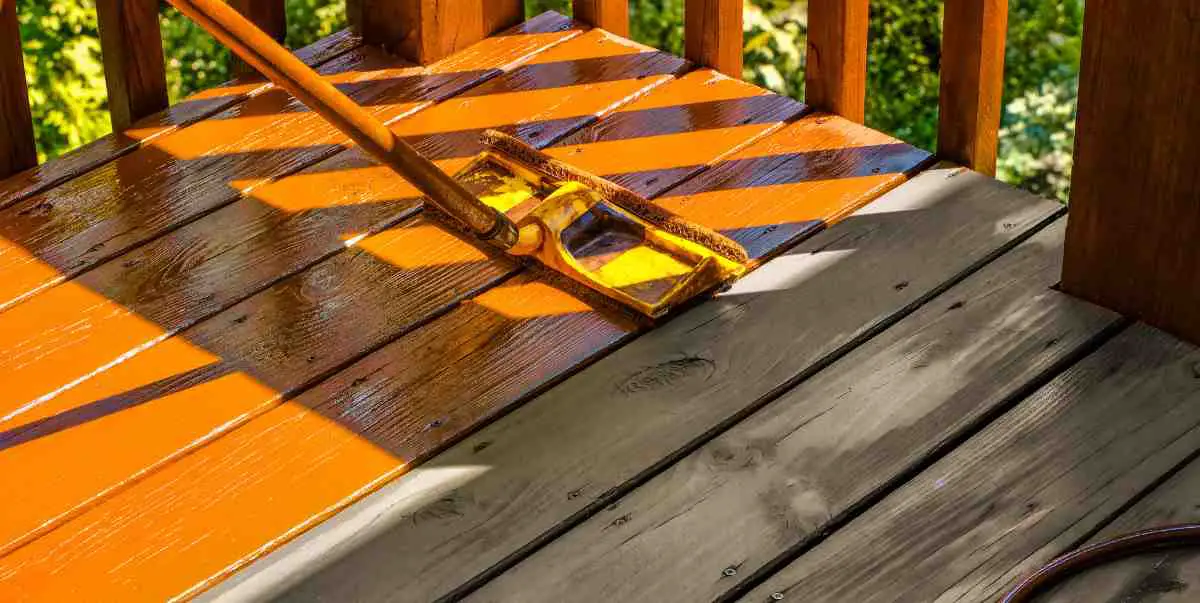To stain Cedar, prepare the wood surface, apply the stain evenly with a brush or rag. Staining Cedar is a straightforward process that enhances its natural beauty while protecting it from the elements.
Cedar’s unique properties make it an ideal choice for outdoor projects, as it is naturally resistant to rot and insects. By following the proper staining techniques, you can ensure your Cedar projects will maintain their beauty and durability for years to come.
Cedar’s rich color and distinct grain patterns make it a popular choice for outdoor furniture, decks, and siding. Staining Cedar not only adds aesthetic appeal but also helps to preserve the wood, extending its lifespan and maintaining its integrity. Whether you are a seasoned woodworker or a DIY enthusiast, learning how to properly stain Cedar is a valuable skill that will elevate your woodworking projects. In this guide, we will cover the step-by-step process of staining Cedar effectively to achieve professional-looking results.
Choosing The Right Stain
When it comes to staining cedar, selecting the proper stain is crucial to achieving the desired look and protection for your wood. Here’s how to choose the right stain for your cedar project:
Oil-based Vs. Water-based Stains
Consider oil-based stains for durability and better protection against the elements. Water-based stains are eco-friendly and offer easier cleanup.
Transparent Vs. Solid Color Stains
Transparent stains allow the natural beauty of the cedar to show through while solid color stains provide more protection and can conceal imperfections.

Preparing The Cedar Surface
Before staining cedar, ensure the surface is clean to achieve an even finish.
- Remove any dirt or debris on the cedar using a brush or a vacuum.
- Wash the surface with a mild detergent and water solution to get rid of any grime.
- Rinse thoroughly and allow the cedar to dry completely before proceeding.
Sanding the cedar surface is essential to ensure the stain adheres properly.
- Use a medium-grit sandpaper to smooth out any rough spots or imperfections.
- Sand along the grain of the wood for an even finish.
- Wipe down the cedar with a tack cloth to remove any dust from sanding.
Applying The Stain
To apply stain to cedar, begin by cleaning and preparing the wood surface. Apply the stain using a brush or sprayer, working with the grain for an even finish. Allow the stain to penetrate the wood for the recommended time, then wipe off any excess.
Finally, allow the cedar to dry thoroughly before enjoying the newly enhanced appearance.
Using The Right Tools
When applying stain to cedar, it’s crucial to have the right tools at hand. Ensure you have a high-quality paintbrush or staining pad to achieve even coverage. A natural-bristle brush is ideal for oil-based stains, while synthetic brushes are best suited for water-based products.
Staining Techniques
Before beginning the staining process, thoroughly mix the stain to ensure uniform color. Apply the stain in the direction of the wood grain to prevent uneven coverage. Work in small sections, ensuring to blend any overlapping areas to avoid streaks or blotches. For an even finish, consider applying a second coat after allowing the initial coat to dry completely.
Ensuring Proper Drying And Curing
Once you have applied the stain to your cedar, it is crucial to allow it to dry properly before moving on to the curing process. This step ensures that the stain adheres correctly to the wood, providing a long-lasting and beautiful finish.
Drying Time
Proper drying time is essential to achieve the desired results when staining cedar. The time it takes for the stain to dry can vary depending on factors such as temperature, humidity, and the type of stain used. Typically, it takes about 24 to 48 hours for the stain to dry completely.
During the drying process, it is important to keep the stained cedar away from any direct sunlight or high heat sources. Excessive heat can cause the stain to dry too quickly, leading to poor adhesion and an uneven finish. Ensure that the stained cedar is placed in a well-ventilated area to allow for proper air circulation, facilitating the drying process.
Curing Process
Once the stain has dried, the next step is the curing process. Curing is the final stage where the stain fully sets and bonds with the wood, providing optimal protection and durability. The curing time can vary depending on the type of stain used and the environmental conditions.
As a general guideline, you should allow the stained cedar to cure for at least 48 to 72 hours before subjecting it to heavy use, such as furniture or foot traffic. This gives the stain enough time to fully cure and harden, ensuring its longevity.
During the curing process, it is crucial to protect the stained cedar from moisture. Avoid exposing it to rain, snow, or excessive humidity, as moisture can interfere with the curing process and negatively impact the finish. Consider covering the stained cedar with a tarp or plastic sheeting if you anticipate unfavorable weather conditions.
Remember, patience is key when it comes to staining cedar. Allowing sufficient drying and curing time ensures that the stain sets properly, giving you a beautifully finished result that will stand the test of time.
Maintaining And Retouching The Stain
To maintain and retouch the stain on cedar, start by cleaning the surface thoroughly and sanding lightly. Apply a fresh coat of stain with even brush strokes, allowing for proper drying time between coats. Regular upkeep will ensure your cedar stays protected and looking vibrant.
Regular Maintenance
Regular maintenance is crucial for keeping your cedar stain looking fresh and vibrant. By following a few simple steps, you can ensure that your stained cedar stays in excellent condition for years to come.
- Inspect your cedar for any signs of wear or damage. Check for peeling, cracking, or fading of the stain.
- Remove any dirt or debris from the surface of the cedar using a soft-bristle brush or a mild detergent mixed with water.
- Once the surface is clean, rinse it thoroughly with water and allow it to dry completely before proceeding.
- Apply a fresh coat of stain, following the manufacturer’s instructions. Use a brush, roller, or sprayer to evenly distribute the stain across the cedar surface.
- Allow the stain to dry according to the product’s recommended drying time.
- Inspect the stained cedar again to ensure that the new coat of stain has covered any previous wear or damage.
To maintain the longevity of your cedar stain, it’s recommended to perform these maintenance steps at least once a year or as needed, depending on the exposure of your cedar to the elements.
Retouching Tips
Even with regular maintenance, there may still be instances where your stained cedar requires retouching. Whether it’s due to weathering, scratches, or other forms of damage, knowing how to effectively retouch the stain will help keep your cedar looking its best.
- Start by cleaning the area that needs retouching with a soft brush or mild detergent and water.
- Make sure the area is completely dry before proceeding.
- Use a small brush or sponge applicator to apply a thin layer of stain to the affected area. Take care to blend the new stain with the surrounding stained surface for a seamless finish.
- Allow the retouched area to dry completely.
- If needed, apply additional thin coats of stain, allowing each layer to dry before applying the next.
By following these simple retouching tips, you can effectively address any areas of concern and maintain the overall appearance of your stained cedar.

Frequently Asked Questions For How To Stain Cedar
What Stain Looks Best On Cedar?
For cedar, semi-transparent stains in natural tones like cedar, redwood, or honey oak enhance the wood’s beauty.
Should Cedar Be Sanded Before Staining?
Yes, sanding cedar before staining helps the wood absorb the stain evenly, resulting in a smoother finish.
Is It Better To Oil Or Stain Cedar?
It is better to stain cedar as it provides more protection against elements and enhances the wood’s natural beauty. Staining also helps to prevent moisture damage and prolong the lifespan of the cedar.
How Do You Stain Cedar Evenly?
To stain cedar evenly, follow these steps:
1. Clean the surface with a mild detergent and water.
2. Sand the cedar to remove rough spots and create an even surface.
3. Apply a pre-stain conditioner to prevent botching.
4. Use a brush or sprayer to apply the stain in even coats, following the wood grain.
5. Wipe off any excess stain and allow it to dry thoroughly before applying additional coats.
Conclusion
Staining cedar can enhance its natural beauty and protect it from the elements. By following the proper steps and using quality products, you can achieve a professional-looking finish. Remember to prepare the surface, choose the right stain, and apply it evenly for best results.
With proper maintenance, your stained cedar will continue to impress for years to come.


